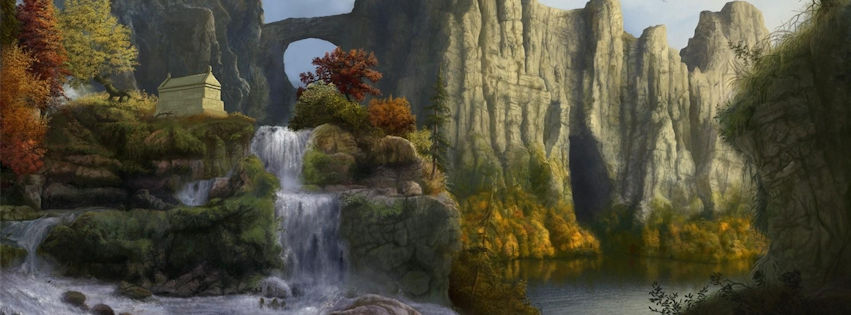Chasmhowler
Chasmhowlers are whispered of more than seen—predators of the deep rock, said to haunt the sun-cracked expanse of Blackthorn Canyon and its surrounding cliffs. Descriptions vary wildly, but the consistent element across every survivor’s tale is the same: a massive, armor-plated beast that erupts from the earth with the velocity of a siege engine, jaws agape, swallowing prey whole before reversing mid-air and crashing down upon them with bone-shattering force. Whether born of natural evolution, magical corruption, or something older still slumbering beneath Ilithi, no scholar has ever managed to study one up close—at least not twice.
Few who witness a Chasmhowler in action live to offer detailed accounts. Rumors suggest the creatures can sense the faintest tremor, lurking just beneath the canyon floor until provoked by movement or sound. Some say they are drawn to heartbeats, others claim they only strike on nights when Katamba is dark, as if something ancient stirs in tandem with the moon. Whatever the truth, caravaners speak their name in hushed tones, and even the Emerald Knights avoid the deeper switchbacks of the canyon when thorngrowth is heavy and the air goes still.
Few who witness a Chasmhowler in action live to offer detailed accounts. Rumors suggest the creatures can sense the faintest tremor, lurking just beneath the canyon floor until provoked by movement or sound. Some say they are drawn to heartbeats, others claim they only strike on nights when Katamba is dark, as if something ancient stirs in tandem with the moon. Whatever the truth, caravaners speak their name in hushed tones, and even the Emerald Knights avoid the deeper switchbacks of the canyon when thorngrowth is heavy and the air goes still.
Basic Information
Anatomy
No specimen of the Chasmhowler—Terravolucerus abominati, in the most widely (if begrudgingly) accepted scholarly term—has ever been recovered whole. All known anatomical analysis comes from partial remains, shattered exoskeletal fragments, and distant observations under duress. What can be pieced together suggests a creature measuring 20 to 30 feet long (6–9 meters) from snout to tail-tip, weighing several tons, with a body built less like a serpent or wyvern and more like a heavily armored siege beast, adapted to sudden vertical motion and subterranean ambush.
The creature’s forelimbs are disproportionately large and muscular, ending in broad, chisel-like claws built for both burrowing and upward propulsion. Its back is layered in segmented, overlapping plates of dark, stone-like carapace—possibly mineral-infused keratin or a naturally developed basalt mimicry—making it nearly impervious to surface-level weaponry. Though often compared to a wyvern, there is no consensus on whether the flanged, fin-like protrusions along its sides are vestigial wings, balance flares, or aerodynamic stabilizers for steering during midair reorientation.
Perhaps most disturbing is the jaw structure, as described by those who claim to have seen it close up. The lower jaw is rumored to split vertically, akin to some deep-sea predators, allowing for a wider surface impact and suction on upward breach. The creature lacks visible eyes, leading many to believe it relies on tremorsense, vibration, or pressure differentials to detect prey from beneath the stone.
The creature’s forelimbs are disproportionately large and muscular, ending in broad, chisel-like claws built for both burrowing and upward propulsion. Its back is layered in segmented, overlapping plates of dark, stone-like carapace—possibly mineral-infused keratin or a naturally developed basalt mimicry—making it nearly impervious to surface-level weaponry. Though often compared to a wyvern, there is no consensus on whether the flanged, fin-like protrusions along its sides are vestigial wings, balance flares, or aerodynamic stabilizers for steering during midair reorientation.
Perhaps most disturbing is the jaw structure, as described by those who claim to have seen it close up. The lower jaw is rumored to split vertically, akin to some deep-sea predators, allowing for a wider surface impact and suction on upward breach. The creature lacks visible eyes, leading many to believe it relies on tremorsense, vibration, or pressure differentials to detect prey from beneath the stone.
Additional Information
Domestication
“I have been asked, more than once, whether the Chasmhowler might be tamed. This question typically comes from academics, drunkards, or one particularly optimistic gnome with a saddle and no survival instinct. Let me be perfectly clear: the day someone manages to bridle one of those gods-forsaken canyon wyrms is the day I retire, burn the keep, and drown myself in the Reshal Sea. They are not beasts. They are not pets. They are a geological event with teeth. Anyone claiming otherwise will receive no sympathy, no funding, and no recovery effort.”
— Lord General Krusk, Emerald Knights, responding to a formal inquiry with his usual subtlety
Geographic Origin and Distribution
"To date, thank the gods and all their neglected cousins, the Chasmhowler appears to be endemic to Blackthorn Canyon. I've yet to see a confirmed sighting outside its basaltic haunts, and I pray daily (uncharacteristically, I might add) that it stays that way. The combination of volcanic substructure, shallow crust pockets, and deep acoustic channels in the canyon might be what keeps them localized... or perhaps the wretched things just like it there. But mark my words: if one is ever spotted in the grasslands or, gods forbid, near a town, I’m packing my notebooks and moving to the islands. Permanently."
— Victoria Pendrake , scratched into the margin of a page she later claimed not to remember writing.
"I once saw one breach at sunset. The light caught its carapace just right—like obsidian dipped in blood. It was beautiful for about half a heartbeat, right up until it swallowed a mule and part of the caravan behind it. I didn’t stop running until I hit the ridge. Beautiful things shouldn’t be allowed to be that fast." - Victoria Pendrake
Scientific Name
Vermocrux catafractum "Armored worm of the cursed slam." (Used in scribbled field notes from Victoria Pendrake) Terravolucerus abominati "Abominable earth-flyer." is the more accepted term.
Geographic Distribution




Comments